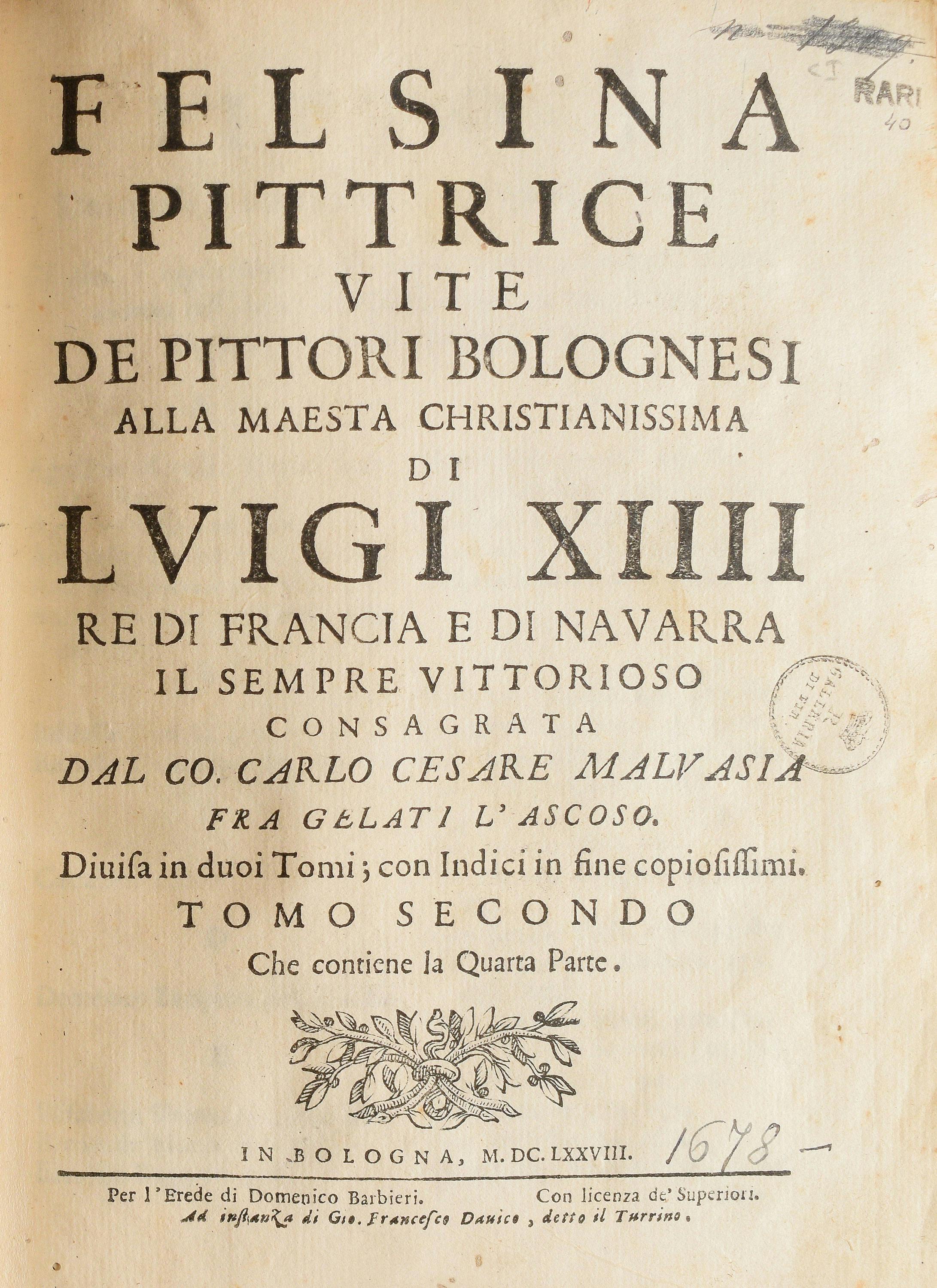Felsina pittrice. Vite de pittori bolognesi
Carlo Cesare Malvasia (Bologna 1616 - 1693)
Count Carlo Cesare Malvasia, born and raised in Bologna, had a versatile intellect and a broad education that ranged from an apprenticeship as a painter - from which he acquired his excellent knowledge of the environment of the artists in the city - to the study of civil and canon law, which he taught at the Bolognese Studio for forty years. As a young man, Malvasia was also well known among the literary circles of the city for his lyrical production, now lost, which allowed him to be admitted to the Accademia dei Gelati with the name of “Ascoso”.
In the 1640s, the Count spent most of his time in Rome, mainly to make useful contacts for his career in the legal field, but soon he began to have a good reputation also as a connoisseur and collector of drawings.
Therefore, Malvasia looked with interest at the initiative of Carlo Manolessi, who in 1647 republished the second Giuntina edition of Vite vasariane (Vasari's Lives) in Bologna, urging readers to update Vasari's work and to make public the biographies of artists who were working elsewhere around the peninsula. Later, the publication of works such as Carlo Ridolfi's Maraviglie dell'Arte (1648), dedicated to the lives of Venetian artists, convinced him to try first-hand a similar literary endeavour. He then began to travel to many Italian cities to gather useful information for his project. In the 1660s, he also visited several times Cardinal Leopold de' Medici to perform some expertise activities on various drawings from the grand ducal collection in Florence, where he got to know Filippo Baldinucci, the expert in charge of reorganizing the cardinal's vast collection of drawings, who was then beginning to work on his Notizie dei professori del disegno da Cimabue in qua (1681-1728).
In 1678, Count Malvasia was finally able to publish his Felsina pittrice, a text on the lives of Bolognese artists, after having collected a large amount of documents through research carried out over the previous two decades.
In Felsina pittrice, Malvasia defended the value of Bolognese artists with a heated argumentative verve against Vasari, who was considered too biased towards Tuscan artists. Some of the remarks in the first copies of his work were so ungenerous towards artists such as Vasari, Raphael and Annibale Carracci that they were unwelcome to the public, so much so that Malvasia was forced to correct them in order to ensure the future success of his publication.
Despite this, in Felsina pittrice, the inspiration from the model of the second Giuntine edition of Vasari's Lives is evident, both in the general organisation of the work, in the extensive use of anecdotes on Bolognese artists, and in the presence of portraits of the artists themselves, some of which were engraved from drawings by Malvasia himself.
In order to ensure the work's international circulation, the ambitious Count Malvasia dedicated Felsina pittrice to Louis XIV, immediately sending a copy to the Sun King's court in Paris and one to the French ambassador in Rome.
The copy of the work belonging to the Uffizi Library is embellished with handwritten annotations by the Oratorian Father Sebastiano Resta, a collector of drawings and expert on the subject who, according to Prosperi Valenti, developed the project of composing a history of figurative art through volumes of drawings.
